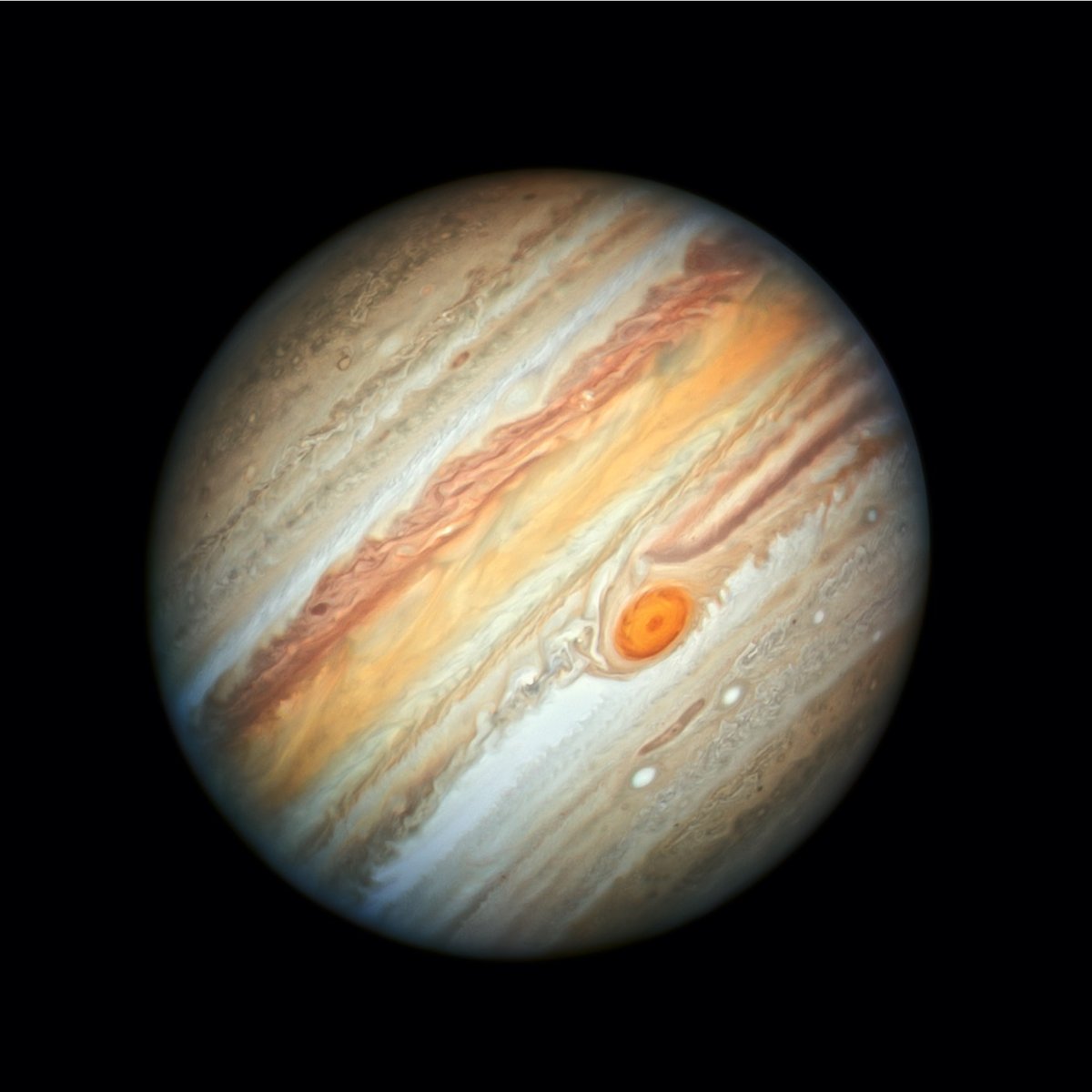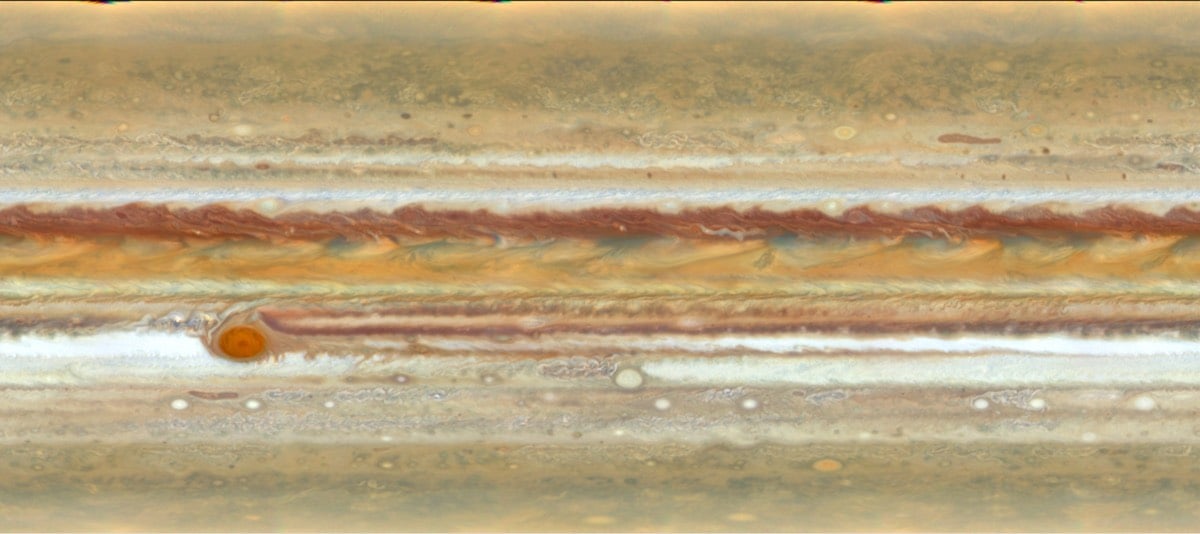The Hubble’s New Portrait of Jupiter

A photo of Jupiter taken by the Hubble Space Telescope in late June was recently released by NASA. Among other things, it shows just how much smaller, redder, and rounder the Great Red Spot has gotten.
The Great Red Spot is a towering structure shaped like a wedding cake, whose upper haze layer extends more than 3 miles (5 kilometers) higher than clouds in other areas. The gigantic structure, with a diameter slightly larger than Earth’s, is a high-pressure wind system called an anticyclone that has been slowly downsizing since the 1800s. The reason for this change in size is still unknown.
The spot was “once big enough to swallow three Earths with room to spare” but has been shrinking steadily since a brief expansion in the 1920s. As the storm contracts, it has stretched up into the Jovian atmosphere.
Because the storm has been contracting, the researchers expected to find the already-powerful internal winds becoming even stronger, like an ice skater who spins faster as she pulls in her arms.
Instead of spinning faster, the storm appears to be forced to stretch up. It’s almost like clay being shaped on a potter’s wheel. As the wheel spins, an artist can transform a short, round lump into a tall, thin vase by pushing inward with his hands. The smaller he makes the base, the taller the vessel will grow.
Recently amateur astronomers have observed “flakes” or “blades” coming off of the storm and dissipating into the larger atmosphere, a formerly rare phenomenon that now seems more common.
The Hubble photographs also yielded a rotating view of the planet as well as a very cool stretched-out photo of the surface:






Stay Connected